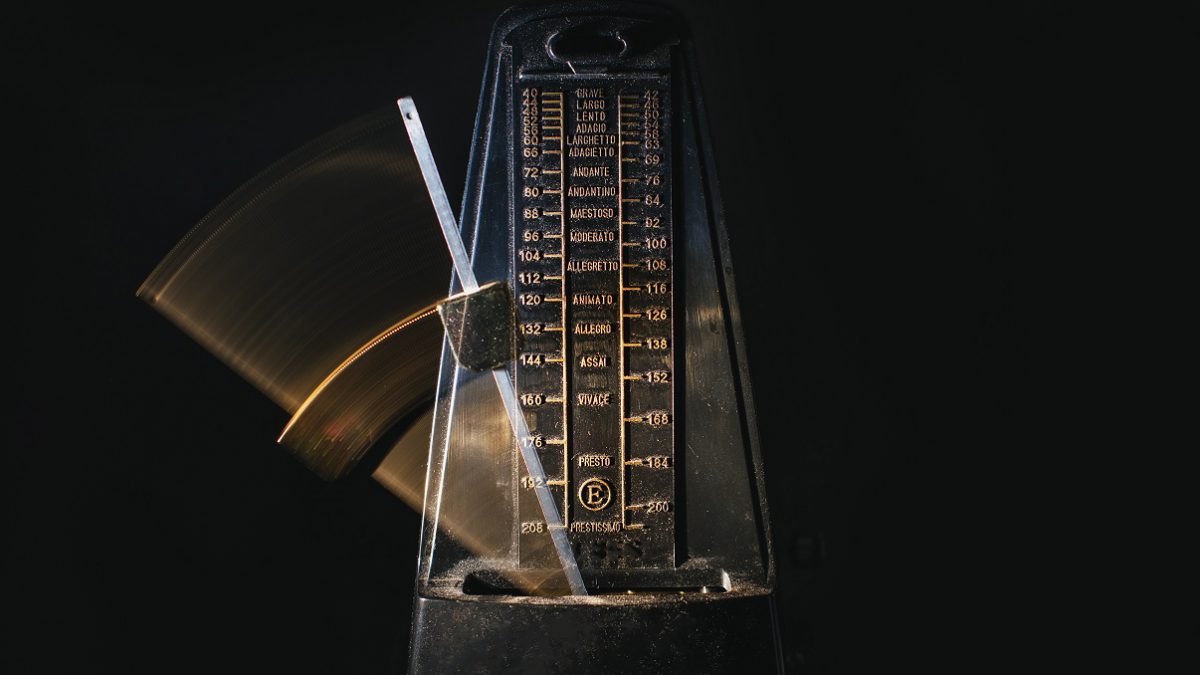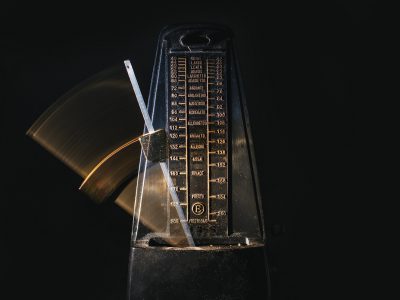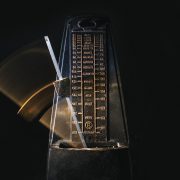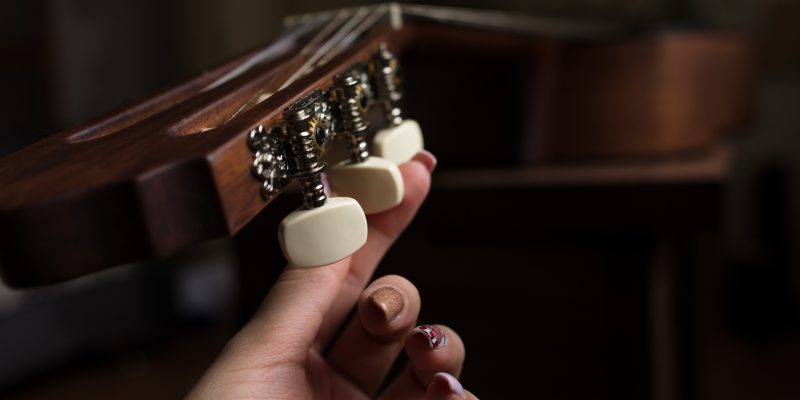
A standard guitar tuning is 6E-5A-4D-3G-2B-1E – six strings that start low, and gradually get higher. However, many guitarists aren’t satisfied with this standard sound, so they chose to tune the strings alternatively to be able to play different chords and riffs. In this article, we’ll walk you through a few of these alternate tunings, so you can get more out of your guitar.
What should you know about guitar tunings?
There is “standard” tuning, and there are various alternate tunings, also commonly used by many guitarists.
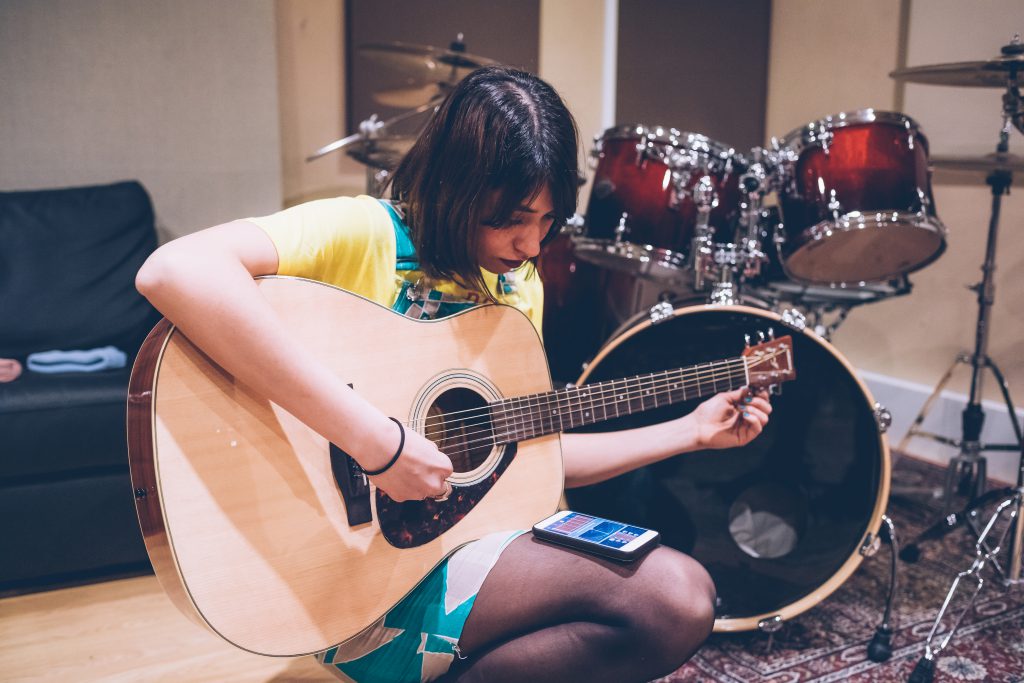
There are different tunings which you can try to discover your favorite guitar sound
Standard tuning
A so-called “standard” tuning allows you to play many chord positions or scales with ordered fingerings. In this article we’ll look at some most popular tuning, and help you
understand their advantages over standard tuning.
In most cases, guitarists use “standard” tuning, which consists of the following notes:
| 6 | 5 | 4 | 3 | 2 | 1 |
| E | A | D | G | B | E |
When we describe a tuning, we name notes from the lowest string to the highest.
Thus, for standard tuning, the lowest string is an E, the one below an A, then a D, and so on until the highest which is also an E. In each case, we’ll list the 6 note names of the 6 strings using the letters of the Anglo-Saxon notation (A, B, C, D, E, F, G).
E flat tuning – loved by Jimi Hendrix
Jimi Hendrix is a legendary guitarist who had a recognizable style sound.
Forty years after his first successes, many guitarists claim his influence and try to learn his songs or imitate the sound of his guitar.
Thus, it’s important to know that in addition to being left-handed, Jimi Hendrix often used E flat tuning, which is different from the standard E tuning.
E flat tuning consists of notes that are semitone lower than in the standard tuning:
| 6 | 5 | 4 | 3 | 2 | 1 |
| Eb | Ab | Db | Gb | Bb | Eb |
Compared to the standard tuning, all strings in E flat tuning are a semitone lower, but the distance between them is the same. This means that you can use all the standard chord positions, and as a result, the sound will be lower than with the standard tuning. It works a bit the opposite to the capo – with a capo placed on the 1st fret, you could use the same chord positions as with standard tuning, but everything you play would become a semitone higher.
With the E-flat tuning, it’s like putting the capo in a minus 1 fret, so everything you’re playing comes out a semitone lower. The advantage of this tuning is that you’ll have access to lower notes while using standard chord positions.
Check out some examples of bands and songs that use this tuning:
- Stevie Ray Vaughan
- Jimi Hendrix
- Guns N’ Roses – Knockin’ On Heaven’s Door / November Rain
- U2 – Sunday Bloody Sunday
Drop D
Now, let’s talk about detuning some strings differently than others.
In Drop D tuning – the “D” simply means the note D, and “Drop” indicates that the E string is tuned down to reach a low D (2 semitones).
The other 5 strings are the same as in the standard tuning.
These are the notes of Drop D tuning:
| 6 | 5 | 4 | 3 | 2 | 1 |
| D | A | D | B | G | E |
Using this tuning, you can keep almost all standard note positions, since the 5 highest strings aren’t modified. However, the lowered E string allows you to reach some nice bass notes and the open D note. This tuning is used widely in rock, hard rock, and metal.
Some examples of groups and songs using Drop D tuning:
- Soundgarden – Black Hole Sun
- Led Zeppelin – Moby Dick
- The Doors – The End
- The Beatles – Dear Prudence
- Jeff Buckley – Grace
- Rage Against The Machine – Killing In The Name
This tuning has often been used by Eddie Van Halen, who even had a custom-made system called “D-tuna” mounted on his guitars.
If drop D isn’t low enough for you, lower the E note to drop C:
Drop C
| 6 | 5 | 4 | 3 | 2 | 1 |
| C | G | C | F | A | D |
Open tunings
Open tuning allows you to create a chord when you play the 6 open strings.
When you play 6 open strings in standard tuning, the notes don’t sound harmonious.
In an open tuning, the sound of 6 opened strings creates a pleasant harmony.
So if the 6 notes create a chord, you can move this chord up and down on the entire fretboard. However, in open tuning, some standard chords may be difficult to play
because of new, more complicated note positions. Open tunings are very popular among guitar players using slides. There are many open tunings, let’s explore some of the most used.
Open D
As its name suggests, the Open D consists of 6 open strings, which together create a D major chord.
In this case, D major contains the notes D, F sharp, and A.
Open D tuning was used by Jimi Hendrix, Stevie Ray Vaughan, as well as Jimmy Page, and it looks like that:
| 6 | 5 | 4 | 3 | 2 | 1 |
| D | A | D | F# | A | D |
Open G
This tuning allows you to play a G major chord with the 6 open strings:
| 6 | 5 | 4 | 3 | 2 | 1 |
| D | G | D | G | B | D |
Sample songs:
- Eric Clapton – Running On Faith
- Pink Floyd – Fearless
- The Rolling Stones – Start Me Up / Brown Sugar
Open D minor
As we said before, there are open tunings based on major chords, however, you can also make a tuning based on a minor chord.
In the case of the open D minor, notes you’ll need are the following:
| 6 | 5 | 4 | 3 | 2 | 1 |
| D | A | D | F | A | D |
Don’t forget about your daily practice with a metronome – download Camtronome
Even if you know, how to tune your guitar, and you can play some songs, riffs and solos, they won’t sound cool if you’re out of rhythm.
Rhythm is an important part of learning to play the guitar. It builds music, alongside melody and harmony. Rhythm consists of accents placed in a certain regularity. It’s very important to keep a steady tempo while playing a guitar.
If you keep busy with guitar practice using Camtronome app, you’ll quickly improve your rhythm skills.


